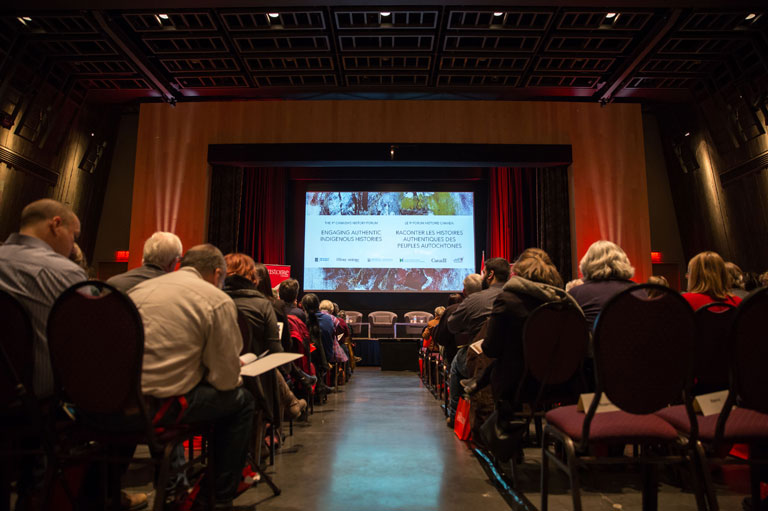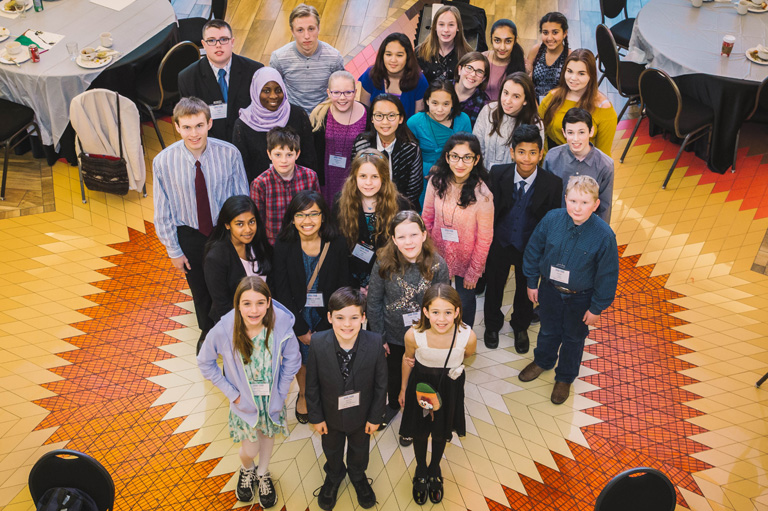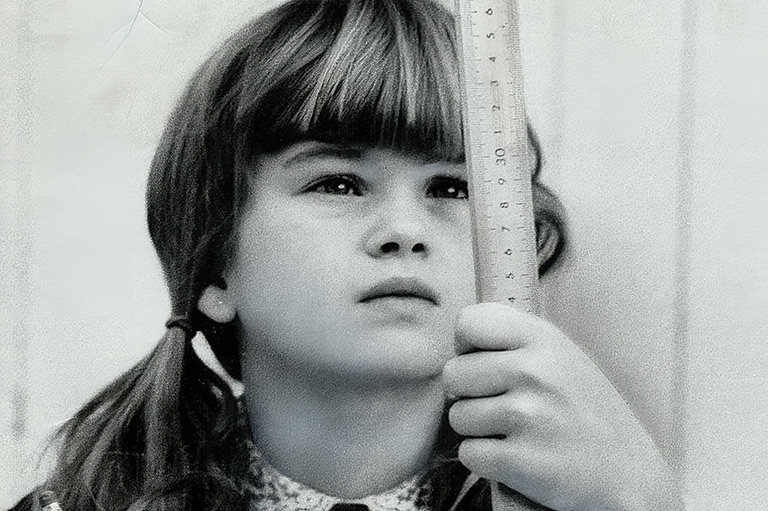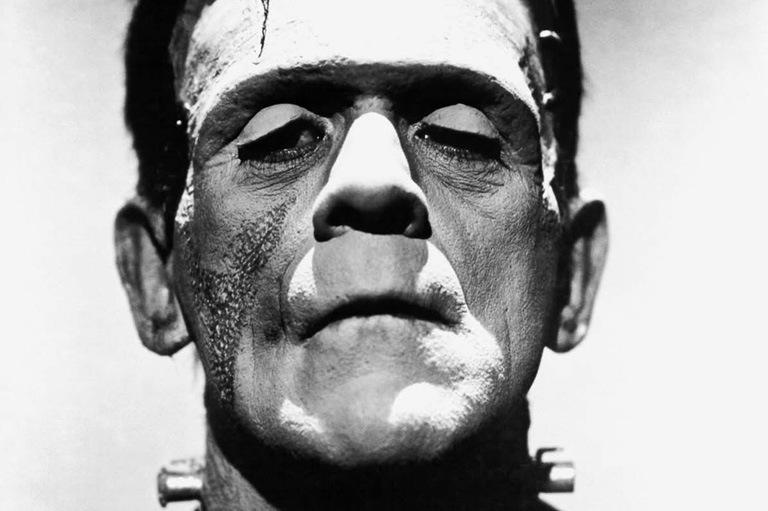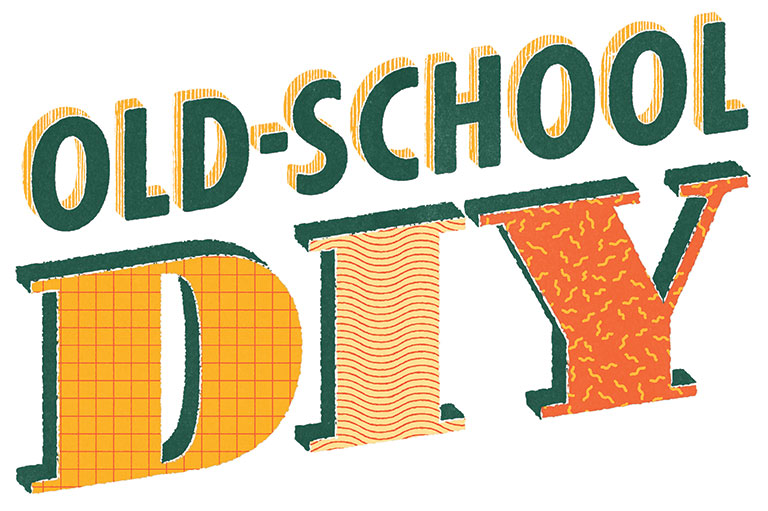Annual Report 2017
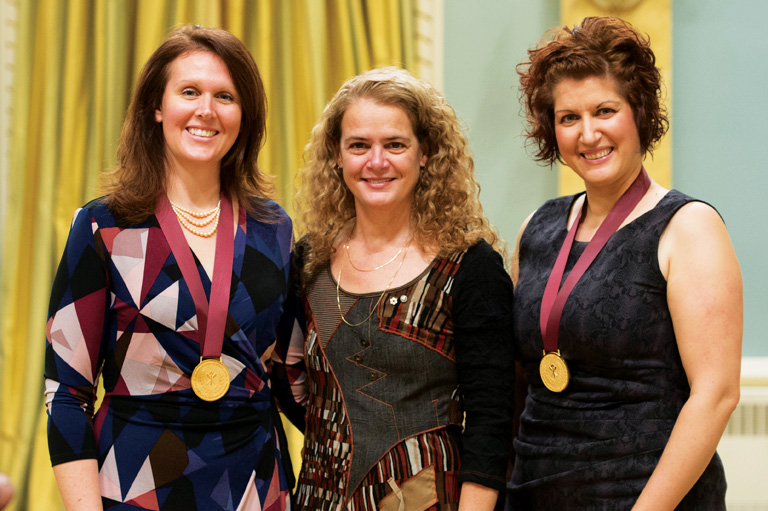
Awarding excellence
On November 22, 2017, Her Excellency the Right Honourable Julie Payette presented the Governor General’s History Awards in one of her first ceremonies as Canada’s new Governor General. Speaking to a full audience in Rideau Hall’s ballroom, Payette praised the 2017 recipients for their commitment to research, education, and storytelling.
Of particular note this year were a number of partnerships and projects that worked directly with Indigenous communities.
These include Spirit Lines, a project between the Manitoba Museum and the Garden Hill and Norway House First Nations in Manitoba; the Exploration Place Museum and Science Centre, which developed a new exhibit and learning space with the Lheidli T’enneh First Nation of Prince George, British Columbia; and educators Naomi Fortier-Fréçon and Leia Laing, who led the Treaty4Project. Sarah Carter’s research into the work of Indigenous and non-Indigenous women on the prairies was also recognized at the awards.
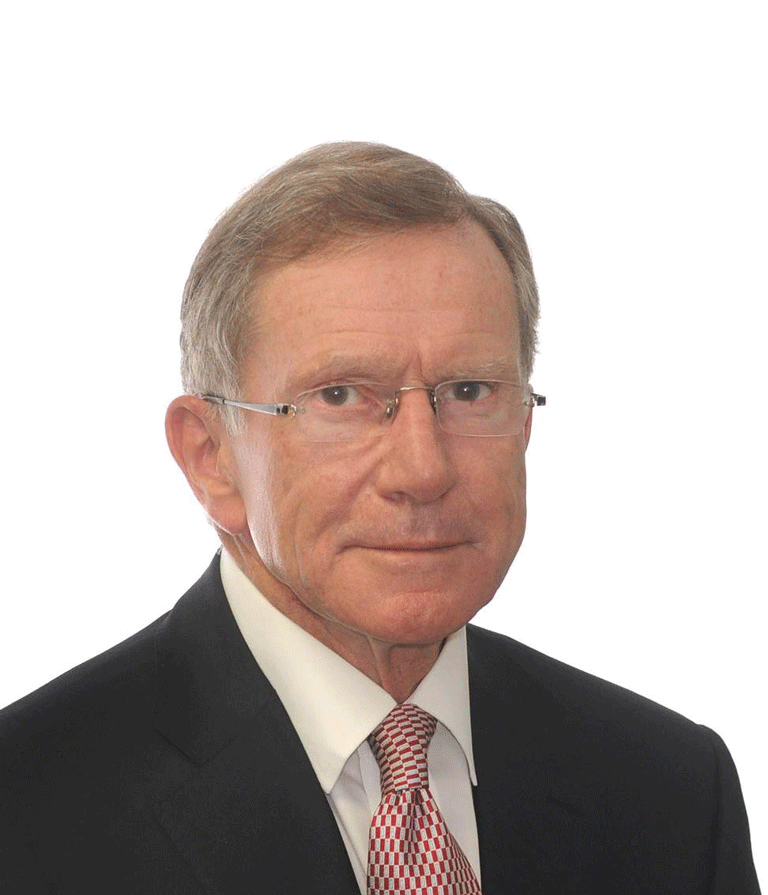
Reaching Readers
Message from the Chair
The sesquicentennial of Canadian Confederation inspired an ambitious agenda for Canada’s National History Society. Fuelled by an extraordinary level of investment from public and private funders, 2017 saw Canada’s History introduce ten new initiatives that have taken the organization to increased levels of reach and engagement.
We entered the year with evidence, through Vividata’s 2016 reports, showing that Canada’s History reaches more than 1.1 million readers in print and online.
Our goal was to grow this exceptional reach and reader engagement. We undertook initiatives to build on our strength as a valued history publisher, a reliable provider of rich digital content, and a national organization that honours excellence, builds connections, and gives voice to the people and projects that advance learning about history.
The year featured a highly successful mass distribution of commemorative issues of Kayak and Canada’s History; international profile in partnership with the Canadian Museum of History with a new Snapshots of Canada exhibition; and long-term impact with the launch of ninety years of The Beaver “in your pocket” featuring mobile access to a new searchable Canada’s History Archive.
We held a highly productive meeting with national educators that charted a course for student learning and for new approaches to history education in line with provincial curriculum; and we celebrated Montreal 375 with print and digital features in French and in English that flew off the shelves in Montreal museums. We look forward to continuing to build on this momentum to help Canadians to become even more engaged with their shared past.
— David Ross
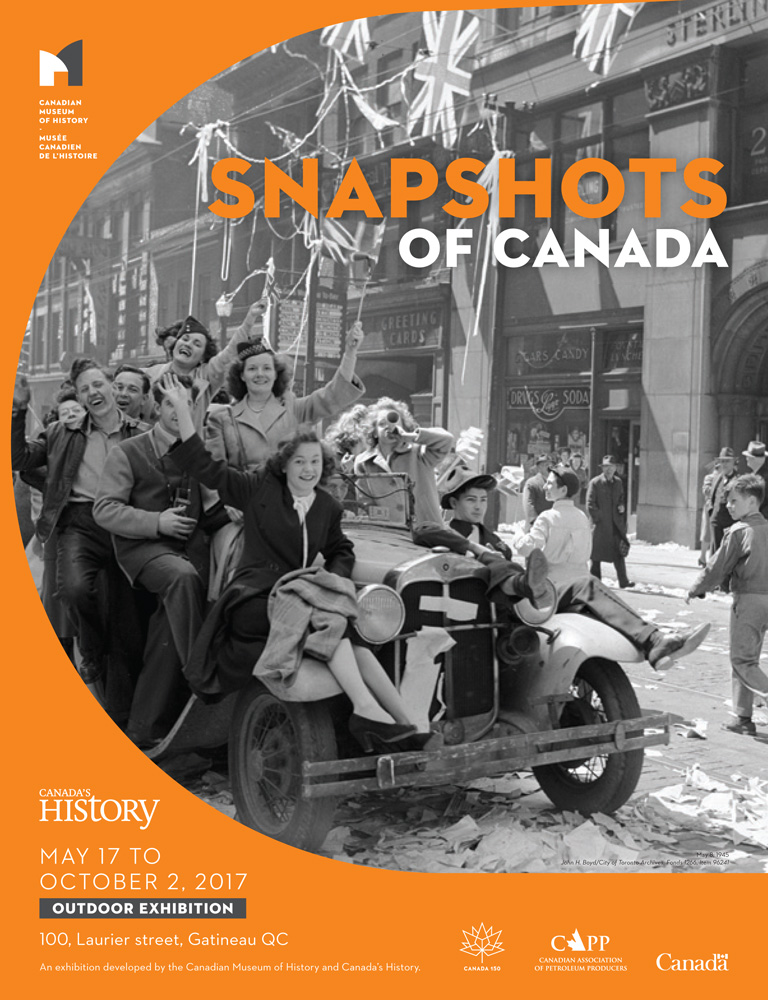
Snapshots of Canada travelling exhibition
Canada’s History worked with the Canadian Museum of History to produce an international travelling exhibition that showcases some of Canada’s most iconic photographs.
Inspired by our books 100 Photos that Changed Canada (2009) and 100 Days that Changed Canada (2011), the exhibition was launched on May 17, 2017, at the Canadian Museum of History in Gatineau, Quebec. The exhibition paired compelling images with texts by well-known writers and historians and is available in both indoor and outdoor formats.
The Canadian Museum of History reports that Canadian consulates requesting the exhibit include Mexico City, Seoul, Sydney, Berlin, and Paris.
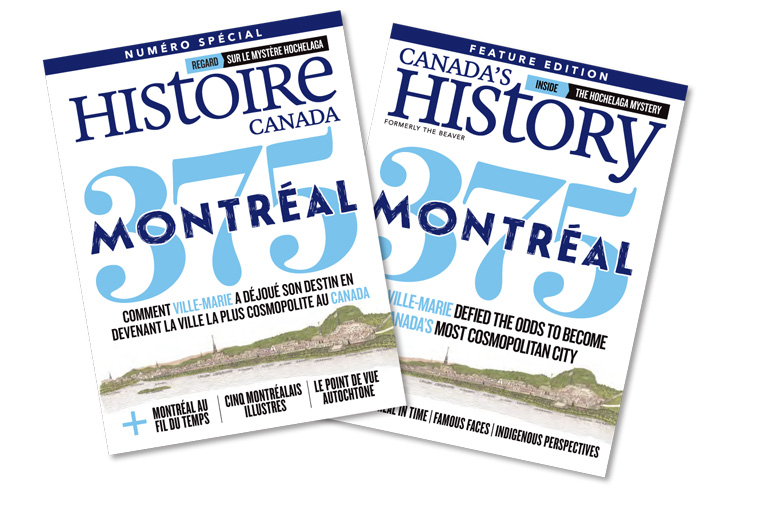
Project Portage sets sail
Canada’s History was excited to launch “Project Portage” with the help of The Molson Foundation.
This special initiative is a collaboration with history organizations in Quebec to share information and stories between Quebec and the rest of Canada. Key projects in 2017 included distributing 13,500 copies of a special magazine celebrating the 375th anniversary of Montreal and the creation of a video series about Montreal.
We are developing opportunities for “voyageur” interns that foster stronger relationships among francophone and anglophone historians. Canada’s History extends its gratitude to all of the Quebec organizations involved in the project.
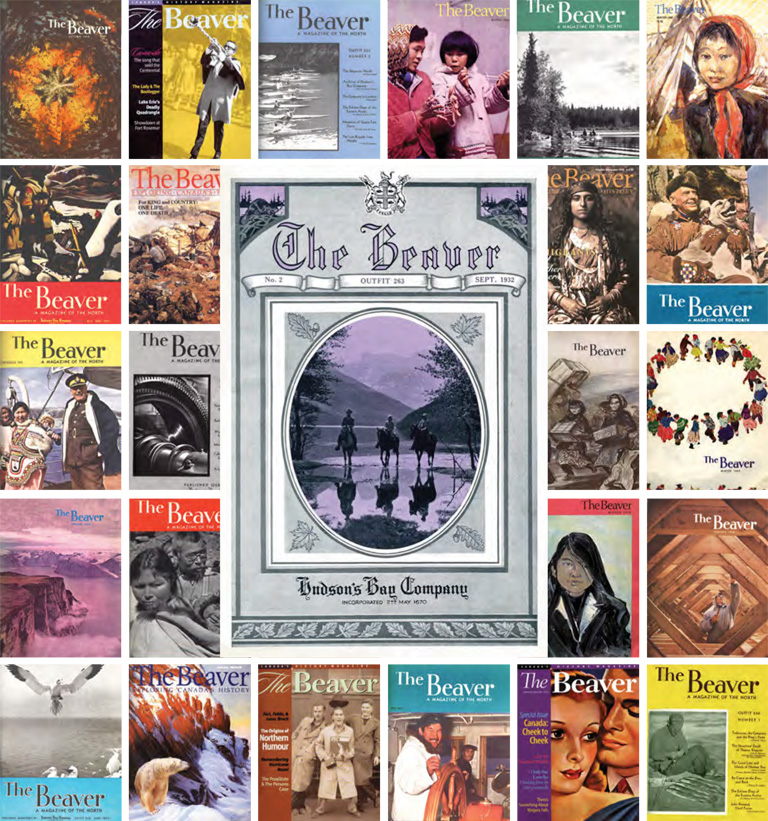
Canada's History Archive: 90 years of history in your pocket
In 2017, The Beaver’s entire catalogue of back issues was made available online — for free — via a new mobile-responsive archive.
Canada’s History Archive featuring The Beaver allows users to browse stories about the people and places of the North, as well as the history of Canada from coast, to coast, to coast.
The archive also features issues of Canada’s History magazine and Kayak: Canada’s History Magazine for Kids. The sesquicentennial project was made possible thanks to a generous contribution from the Hudson’s Bay Company History Foundation as well as the support of donors in the company of Adventurers.
In addition, the Society launched a new mobile-responsive website. Content highlights included a livestream of the 2017 Canada’s History Forum and “Voices of Vimy,” a podcast that explores the fateful Great War battle through war letters written by soldiers and their loved ones.
“Voices of Vimy” was named best podcast at the Canadian Online Publishing Awards.
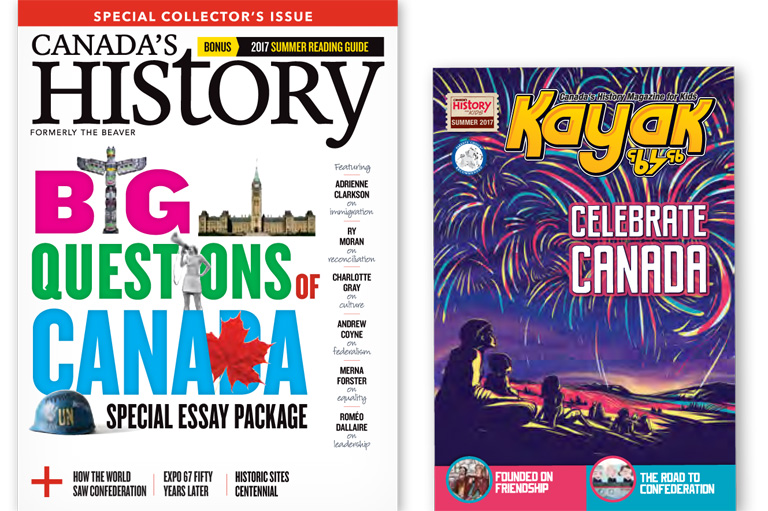
Canada 150 special issues
To mark Canada’s sesquicentennial, the Society published special issues of both Canada’s History and Kayak magazines.
The centrepiece of Canada’s History was an essay package, “Big Questions of Canada,” which explored key topics of importance to all Canadians.
Kayak, meanwhile, published a special “Celebrate Canada” issue in English and French versions. Both versions were distributed for free at five hundred Canada Day events across the country.
More than 225,000 copies were issued, and 10,000 more copies were given to libraries and schools. The society also produced free digital educational materials relating to the special issue. Sincere thanks goes to donors in the company of Adventurers, whose generous support — together with dedicated funding from Jim and Leney Richardson of Manitoba, The Molson Foundation of Quebec, and the Government of Canada — made possible this important project.
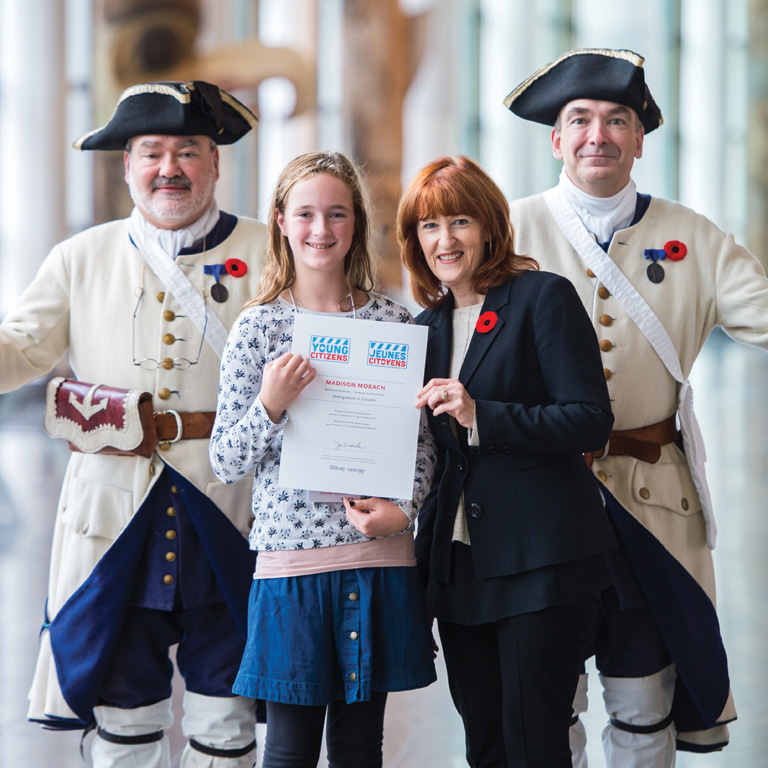
Engaging youth
As part of the national program for Heritage Fairs, the top students from eighty regional Heritage Fairs across Canada were invited to create a short video about their research.
More than 180 new digital stories were posted to the national website YoungCitizens.ca (JeunesCitoyens.ca) in the spring of 2017. Following a public vote and judging process, two students from each province and territory travelled to Ottawa for the fourth Canada’s History Youth Forum.
These twenty-six students spent four days exploring the nation’s capital and learning from each other. As a special Canada 150 initiative, the students shared their vision for Canada’s next fifty years in a video message to Canadians, which can be viewed online at YoungCitizens.ca.
In 2017, approximately 56,000 students in all provinces and territories created a project for the Heritage Fair program. An additional 108,000 students participated in the program by visiting one of the 950 local fairs across Canada.
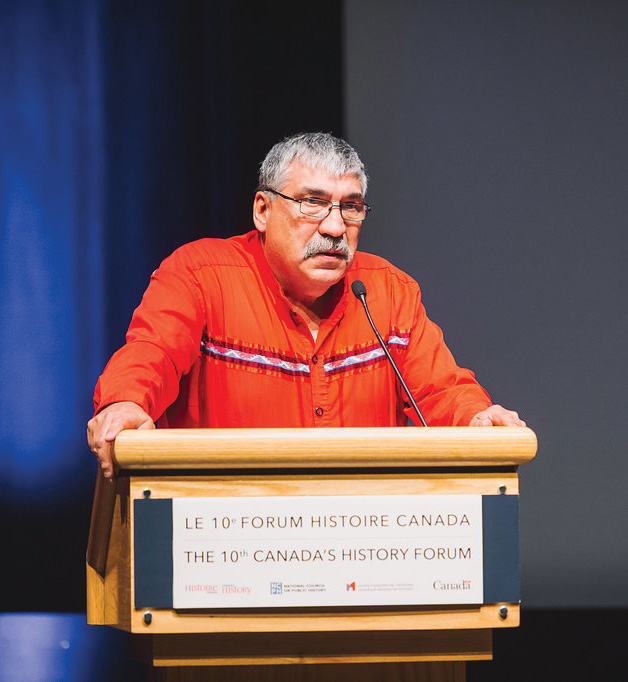
Examining the past
“Making History Relevant” was the theme for the 2017 Canada’s History Forum. The forum, held in conjunction with the Governor General’s History Awards, was a collaboration with the National Council for Public History.
Presenters included Tim Grove from the Smithsonian National Air and Space Museum; Jean- Pierre Morin from Indigenous and Northern Affairs Canada; Dominique Trudeau from the McCord Museum; and Jan Grabowski from the University of Ottawa.
The sessions are available at: CanadasHistory.ca/HistoryForum.
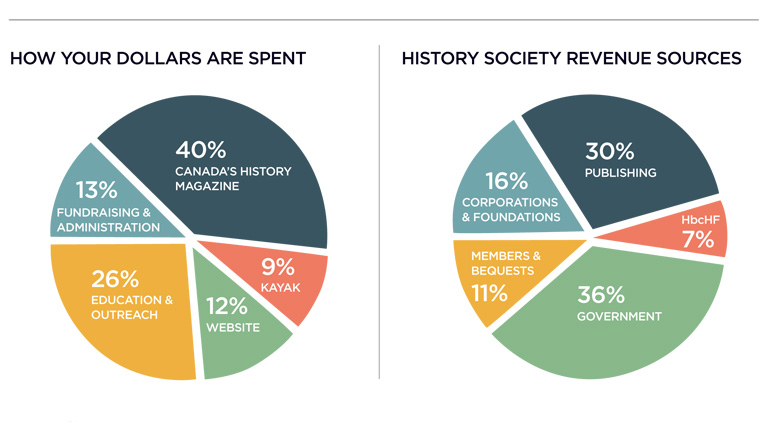
Themes associated with this article
Advertisement
In case you missed them...
At Canada’s History, we highlight our nation’s past by telling stories that illuminate the people, places, and events that unite us as Canadians, while understanding that diverse past experiences can shape multiple perceptions of our history.
Canada’s History is a registered charity. Generous contributions from readers like you help us explore and celebrate Canada’s diverse stories and make them accessible to all through our free online content.
Please donate to Canada’s History today. Thank you!

